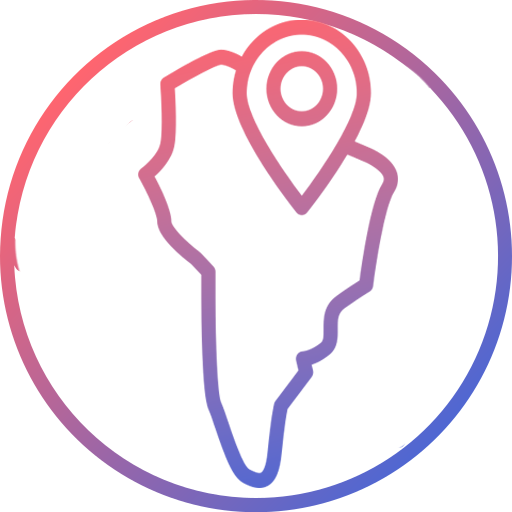Frequently Asked Questions
eSIM Coverage in Remote and Rural Areas of the Schengen Area: What to Expect
Explore what to expect when using eSIMs in remote and rural areas of the Schengen Area. Learn about coverage limitations, top providers, and tips for staying connected in less populated regions.
The Schengen Area is home to diverse terrains, including bustling cities, quaint villages, and remote rural regions. While eSIMs provide seamless connectivity across borders, coverage in rural and remote areas can vary significantly. Understanding what to expect and how to prepare can make all the difference in staying connected during your travels. This guide explains eSIM coverage in less populated areas of the Schengen Area, highlights the best providers, and offers tips for reliable connectivity.
1. Why eSIM Coverage Varies in Remote Regions
A. Limited Network Infrastructure
- Rural areas often have fewer cell towers, resulting in weaker signals or coverage gaps.
B. Provider-Specific Coverage
- Some eSIM providers have stronger partnerships with local networks, giving them an edge in rural regions.
C. Terrain Challenges
- Mountains, forests, and other natural barriers can impact signal strength and network availability.
2. Best eSIM Providers for Rural Coverage
A. Airalo
- Why It’s Great:
- Partners with multiple local networks for better rural connectivity.
- Reliable regional plans, such as the Europe Plan ($30 for 10GB).
B. Holafly
- Why It’s Great:
- Unlimited data plans ensure you don’t run out of connectivity in remote areas.
- Excellent for heavy users in rural regions.
C. Nomad
- Why It’s Great:
- Offers affordable plans with decent rural coverage.
- Flexible data options like 5GB for $25.
D. Ubigi
- Why It’s Great:
- Pay-as-you-go options starting at $10 per GB for low data users.
- Strong coverage in sparsely populated areas through partnerships with local providers.
3. How to Check eSIM Coverage in Rural Areas
A. Use Coverage Maps
- Most providers offer detailed coverage maps on their websites or apps.
- Check the network availability for specific regions before purchasing an eSIM plan.
B. Research Local Networks
- Find out which networks are strongest in the area you plan to visit and ensure your eSIM provider partners with them.
C. Read Reviews
- Look for reviews or testimonials from travelers who have used eSIMs in similar locations.
4. Tips for Staying Connected in Remote Areas
A. Activate Your eSIM in Advance
- Set up your eSIM and test connectivity while connected to reliable Wi-Fi in an urban area.
B. Use a Portable Hotspot
- A portable Wi-Fi hotspot compatible with eSIMs can amplify weak signals in rural regions.
C. Download Offline Maps and Resources
- Use apps like Google Maps to download offline navigation data before heading to areas with poor connectivity.
D. Enable Manual Network Selection
- Switch to the strongest available network if your device doesn’t automatically connect.
- iPhone: Settings > Cellular > Network Selection > Turn Off Automatic > Choose Network.
- Android: Settings > Connections > Mobile Networks > Network Operators > Select Network.
E. Conserve Data
- Limit background data usage to maximize your eSIM plan:
- iPhone: Settings > Cellular > Low Data Mode.
- Android: Settings > Network & Internet > Data Saver.
5. Example Scenarios
Scenario 1: Hiking in the Swiss Alps
- A traveler uses Holafly’s Unlimited Europe Plan to stay connected for navigation and safety alerts.
- They download offline maps beforehand and switch to manual network selection when coverage weakens.
- Outcome: Reliable connectivity throughout the hike.
Scenario 2: Exploring Rural Scandinavia
- A road trip traveler activates Airalo’s Europe Plan for multi-country coverage and uses a portable hotspot for improved connectivity.
- Outcome: Seamless navigation and emergency communication, even in remote villages.
Scenario 3: Digital Nomad in a French Countryside
- A remote worker staying in a rural French village uses Ubigi’s pay-as-you-go plan for light browsing and video calls.
- Outcome: Affordable and consistent connectivity for work and leisure.
6. Challenges and Solutions
| Challenge | Solution |
|---|---|
| Weak signal in rural areas | Use a portable hotspot or manually select a stronger network. |
| Coverage gaps in remote regions | Research providers with strong local partnerships like Airalo or Holafly. |
| Running out of data | Opt for unlimited plans or top up your eSIM plan before heading to rural areas. |
| Activation issues in remote areas | Activate your eSIM in a Wi-Fi-connected location before traveling. |
7. Frequently Asked Questions
Which eSIM provider offers the best rural coverage in the Schengen Area?
- Airalo and Holafly are top choices due to their partnerships with multiple local networks.
Do eSIMs work in all Schengen countries?
- Most regional eSIM plans cover all 27 Schengen countries, but check the provider’s coverage map for rural areas.
Can I use a portable hotspot with an eSIM in remote areas?
- Yes, portable eSIM-compatible hotspots can boost connectivity in weak-signal locations.
What should I do if my eSIM doesn’t work in a rural region?
- Try manual network selection or move to a higher elevation for better signal strength.
Is offline navigation reliable in remote areas?
- Yes, offline maps downloaded in advance are essential for navigation in regions with limited connectivity.
Exploring rural regions in the Schengen Area? Use our widget to find the best eSIM providers and stay connected wherever your travels take you.
Create new eSIM
Popular Destinations

Europe
Switzerland
